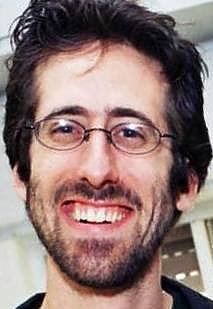This week, we are pleased to welcome guest writer, Dvar Tzedek alumnus Rabbi James Jacobson-Maisels.
Parshat Metzora describes the outbreak of “an eruptive plague upon a house”[1] and the series of procedures the owner and priest must go through to check and cure it. The midrash on our parshah suggests several acts that could cause this oddity—a spiritual malady affecting an external physical object like a home. Some midrashim claim the plague comes from a lack of generosity—falsely announcing that one is going to make a charitable donation[2] or refusing to lend one’s objects to one’s neighbors.[3] Another suggests that its causes include idolatry, violence, self-centeredness, theft and miserliness.[4] What the various midrashim seem to agree on is that the sinner is guilty of an error of the heart: the owner of the afflicted house has placed objects and prosperity before generosity and human kindness. We too suffer from this affliction today—every time we look away when someone asks us for help or don’t give as much tzedakah as we could. But we lack the visible indicator—the tzaraat on our homes, to let us know that we need to change.
Fortunately, the message of our parshah is that the plagued home—or our own plagued hearts—can be cured. Parshat Metzora provides us with a three step process. First, the house is inspected and closed off to see what will develop. Then, if necessary, the specific stones that bear the tzaraat are removed and replaced with untouched stones. Finally, if the plague continues to spread, the house is torn down completely.[5]
The process for healing the biblical home should provide a blueprint for healing our own ailments of the heart—greed, selfishness and failure to mend the world. Whenever our hearts stray from kindness and compassion, we must first inspect and investigate the selfishness, apathy or hardness inside of us. We can then attempt to remove these malignancies, and allow our hearts to be filled with compassion.
If the first two steps fail, and we find our hearts still closed to compassion, we must sometimes break them open. Like a home, which shelters us from the elements and prevents what’s outside from getting in, our hearts can act as barriers, keeping the pain of others out where it can’t penetrate our defenses. When our hearts clench shut so that we are so unwilling to be touched by the pain of the world that we fail to respond with compassion, it is time to break them open completely. This is not something that happens only on an internal or psychological level. Breaking open our hearts requires taking action to heal the pain in the world: opening our wallets, breaking a sweat, raising our voices and lifting our pens to bring that healing—that tikkun—which the parshah tells us is possible.
This tearing down and breaking open of our hearts is not an act of violence but a call for Divine compassion to enter, as it says in the psalms: “HaShem is close to the brokenhearted”[6]; or, as the midrash teaches us: “one whose heart is broken… the Shekhinah walks with him… he is considered as if an altar is built in his heart and he offers up sacrifices on it… [and] he is beloved of the Holy Blessed One more than the ministering angels.”[7]
From this productive broken-heartedness we open ourselves to the world in a new way, and make our relationship to that world and our fellow human beings holy. The closed hearts that come between us and others—even those in distant countries and in societies and circumstances vastly different from our own—release and open so that we can recognize our basic sameness.
Indeed, as Rashi comments, tzaraat on a house is not a plague, but a blessing, one that allows us to find the treasure which is hidden within our home.[8] Similarly, when we see that we have been struck with the plague of a closed heart, and fail to respond to the need we see around us with generosity and kindness, we should understand that the awareness of this shortcoming is actually a gift, a treasure map to the riches of our true heart and the compassion that lies within it. In this sense, when we read “This is the Torah, a person that is plagued,”[9] we recognize that our plagues and our impurities are our Torah, our deepest teachings, leading us to a sanctified existence within the world and a heart broken open with compassion.
[1] Leviticus 14:34.
[2] Leviticus Rabbah 16:5.
[3] Leviticus Rabbah 17:2.
[4] Leviticus Rabbah 17:3.
[5] Leviticus 14:38-45.
[6] Psalms 34:19.
[7] Ozar ha-Midrashim, Alef-bet of Rabbi Akivah, nusach aleph, beit ha-midrash 3:12.
[8] Rashi on Leviticus 14:34.
[9] Leviticus 14:32.

